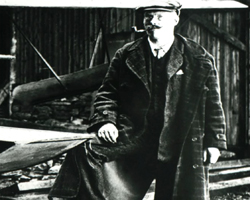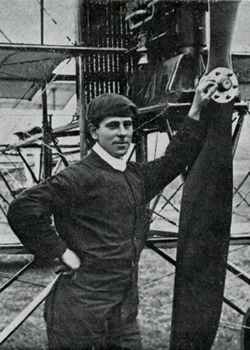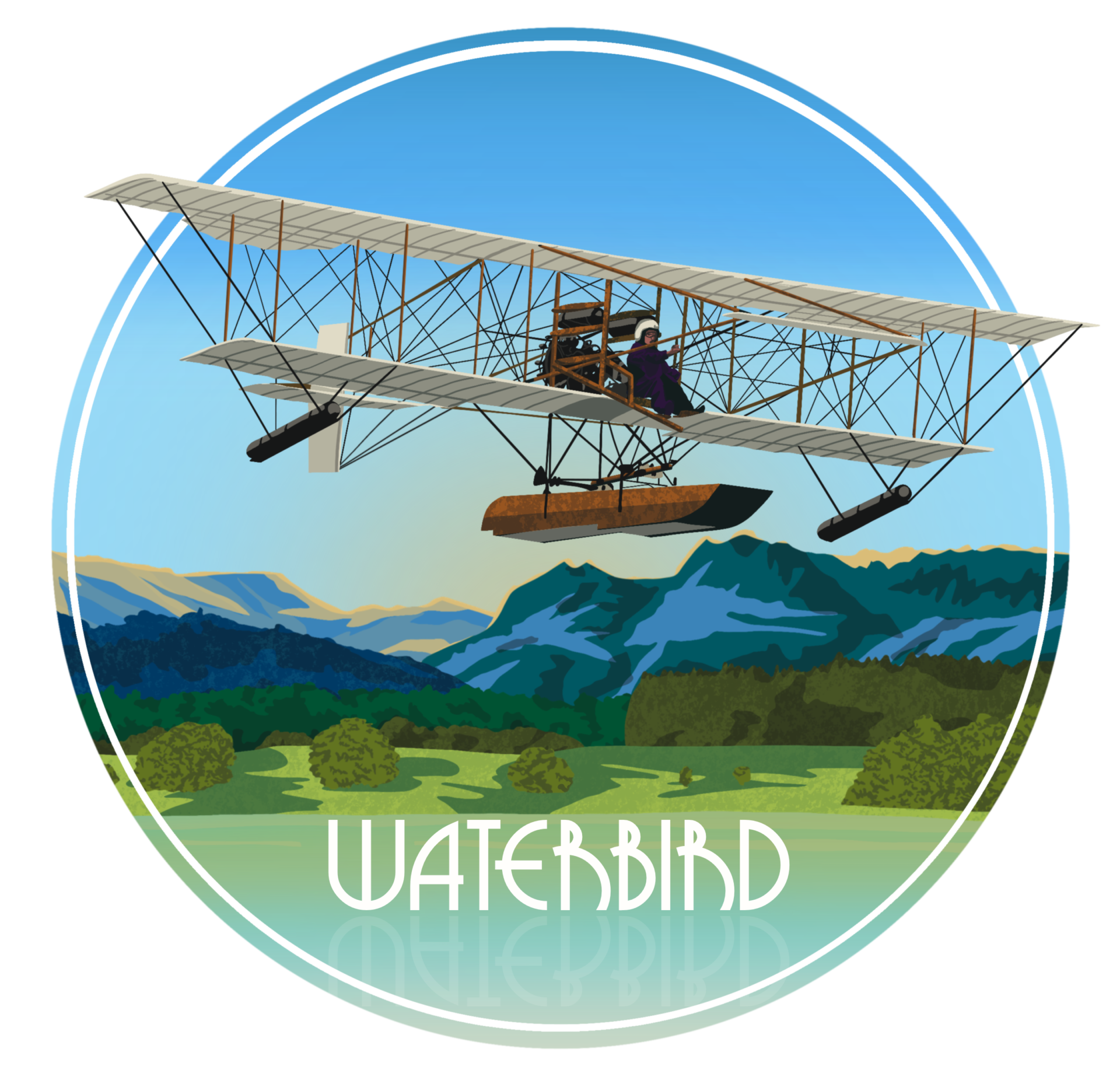Brownsfield Mills

Edward Wakefield

Alliott Verdon Roe
Brownsfield Mills was built along the Rochdale Canal in 1825 at Binns Place, Great Ancoats Street, Manchester.
Humphrey Verdon Roe had inherited the business of H. W. Everard & Company, which made Bull’s-Eye men’s trouser braces and all forms of belting and webbing at its factory at Brownsfield Mills. With his brother Alliott, he founded A. V. Roe & Company (‘Avro’) on 1 January 1910, the world’s first company to be registered as an aeroplane manufacturer. Production of aeroplanes would be by Alliott in the basement.
Humphrey replied to adverts by Edward Wakefield in Flight magazine, 24 September 1910 for a second-hand Blériot monoplane and an engine. However, following the flight of a hydro-aeroplane by Glenn Curtiss in California on 26 January 1911, Wakefield changed his requirement. After a meeting with Alliott on 26 February 1911, Avro accepted their first commission for an aeroplane which they had not designed: an Avro Curtiss-type biplane, to be constructed in their workshop at Brownsfield Mills. Since there was 1 large door, and in anticipation of transportation, then the build would have been in sections.
On 25 May, transfer took place to Brooklands for flight-testing. This photo is of the prototype Type E hydro-aeroplane being manufactured in the basement and there was a female workforce particularly for aeroplane parts. The Type E was taken by horse and cart to London Road (now Piccadilly) station. It is presumed that the same method was used for the Avro Curtiss-type. Onward from Brooklands to Windermere by rail was on 7 July, where conversion took place to a hydro-aeroplane known as ‘Waterbird’.
Gertrude Bacon, who flew as a passenger in Waterhen at Windermere during 1912, wrote in her book Memories of Land and Sky ‘I visited the aerodromes and aeroplane works that by then were springing up in all directions. One of the earliest of the latter I found in a mill outside Manchester, where half the building was devoted to the manufacture of men’s braces, and the other to ‘Avroplanes’. Of the former the most romantic example was undoubtedly the Lake of Windermere’.
It is presumed that this article, in The Aeroplane magazine of 7 December 1911 about a visit to the premises, was written by her.
The drawings dated 9 March 1911 of the Avro Curtiss-type are the oldest surviving Avro aeroplane drawings and are signed by Avro’s works manager Reginald Parrott.
– The rudder is the oldest surviving part carrying the ‘A. V. Roe & Co.’ legend.
